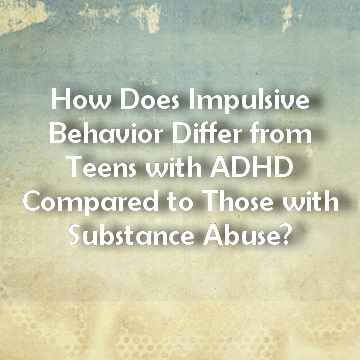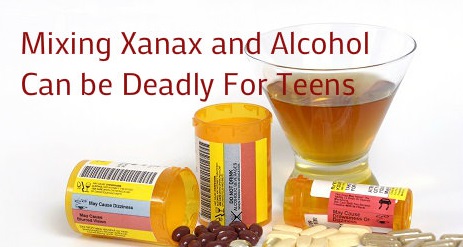20 Sep 2013
Understanding Opioid-Related Disorders
Opioid-related disorders is the collective name of a group of substance-related disorders listed in the Diagnostic and Statistical Manual of Mental Disorders, a reference guide commonly used by mental health professionals across America. All of the conditions with this name involve negative consequences associated with the use of a wide variety of opioid narcotic medications or drugs. DSM 5, the 2013 edition of the Diagnostic and Statistical Manual, makes several changes to the definitions of the opioid-related disorders. Some of these changes involve a mere change in wording, while others involve a significant change in meaning.
Opioid-Related Disorder Basics
The five opioid-related disorders listed in DSM 5 are opioid use disorder, opioid intoxication, opioid withdrawal, “other” opioid-induced disorders and “unspecified” opioid-related disorder. Opioid use disorder is a new condition created by blending the definitions for two other conditions, called opioid abuse and opioid dependence, which appeared in the “Diagnostic and Statistical Manual’s” obsolete fourth edition (DSM IV). Opioid intoxication and opioid withdrawal keep the same definitions they had in DSM IV. The “other” opioid-induced disorders heading is a substitute for five separate DSM IV conditions. “Unspecified” opioid-related disorder acts as a substitute for a loosely defined DSM IV disorder called opioid-related disorder not otherwise specified (NOS).

Opioid Use Disorder
Opioid drugs and medications are well known for their ability to trigger substance abuse in users, as well as substance dependence (a medical term for addiction). People affected by substance abuse don’t meet the criteria for diagnosing a physical/mental addiction, but still participate in ongoing substance-based behaviors that strongly impact their lives in negative ways. People affected by substance dependence do meet the criteria for diagnosing an addiction; like substance abusers, they also participate in clearly harmful substance-based behaviors on a regular basis.
Issues of substance abuse and substance dependence overlap to a considerable degree. In fact, from a scientific standpoint, it’s perfectly reasonable to view dependence as a particularly damaging form of abuse. DSM IV kept the diagnosis of substance abuse and substance dependence strictly separated. However, DSM 5 discards the separate listings contained in DSM IV and establishes a replacement condition—called substance use disorder—which joins the symptoms of substance abuse with the symptoms of substance dependence. In accordance with this change, opioid users with significant abuse- or dependence-related problems will now receive a single diagnosis for opioid use disorder.
Opioid Intoxication
People in the midst of opioid intoxication develop at least two symptoms that alter their normal mental function, change their behavior for the worse, or otherwise impede their ability to carry out their typical routines. In all cases, one of the symptoms present must be unusual narrowing or widening of the pupils. Other qualifying symptoms include an inability to pronounce words properly, unusual sleepiness, a decline in normal memory function, a decline in the ability to voluntarily focus attention, and the onset of the dire state of unresponsiveness known as a coma. Additional requirements for a diagnosis include verifiable use of an opioid drug or medication in the very recent past and lack of other psychological or physical issues that could produce the problems attributed to opioid use.
Opioid Withdrawal
Opioid withdrawal occurs when an opioid user who has grown accustomed to the effects of a drug or medication suddenly stops using that drug or medication, or steeply decreases use over a short span of time. The Diagnostic and Statistical Manual provides doctors with guidelines to gauge the seriousness of withdrawal in any given patient. People going through grade 0 opioid withdrawal typically develop symptoms such as anxiety, a strong desire to continue drug/medication use, and the presence of behaviors designed to fulfill that desire. People going through grade 1 withdrawal develop symptoms such as unusual sweat output, uncontrollable yawning and unusual tear or mucus production. Symptoms associated with grade 2 opioid withdrawal include twitching muscles, restricted eating patterns similar to those found in people with anorexia, and pupil dilation. Grade 3 opioid withdrawal symptoms include sleeplessness, cramping abdominal muscles, muscle weakness, diarrhea, vomiting, and abnormal increases in blood pressure, heart rate and breathing rate.
“Other” And “Unspecified” Disorders
The “other” opioid-induced disorders diagnosis is designed to describe the presence of any mental disorder-related symptoms that appear as a consequence of opioid use. It replaces five separate diagnoses contained in DSM IV, including opioid-induced mood disorder, opioid-induced sleep disorder, opioid-induced sexual dysfunction, opioid-induced psychotic disorder with delusions, and opioid-induced psychotic disorder with hallucinations. The “unspecified” opioid-related disorder diagnosis lets mental health professionals identify cases of opioid-related mental health problems that don’t meet the minimum requirements for diagnosing any other opioid-related disorder.
05 Sep 2013
Mixing Xanax and Alcohol Can be Deadly For Teens
If you look up the number one prescribed medication in the United States you will find Xanax at the very top of the list. The anti-anxiety medication is so widely prescribed these days that it can be found in a shockingly high number of American households. Used to treat anxiety and panic disorders, the drug is also commonly prescribed for patients complaining of high stress. Despite the fact that Xanax has recently been implicated in some high profile overdose deaths, the drug continues to enjoy widespread popularity.
Xanax is part of a family of drugs known as diazepines. Its chemical designation is Alprazolam and in 2009, 44 million prescriptions for the drug were written. By 2011 diazepine prescriptions were numbering above 260 million, of which Xanax represents the lion’s share.
Dangerous Quick High
Unfortunately the drug is not only popular with patients and their doctors but with young adults and teens looking for a quick drug-induced escape from reality. Teens like Xanax because it is so accessible – just grab one out of mom or dad’s medicine cabinet, right? – but also because the drug offers such a quick “high.” Within just 10 or 15 minutes users can feel an extreme high or low sensation. Users also experience accentuated symptoms of sedation like slurred speech, droopy eyes and other kinds of psychomotor retardation. Essentially, the person feels like they are drunk on alcohol.
Xanax provides a quick high because it is metabolized quickly, but the high ends just as fast as it comes on. The problem is that the drug also induces a state of memory impairment that is akin to blacking out. This creates a high risk situation since the person senses the absence of the sought after feelings but cannot remember that they recently took a pill, leaving them quite likely to pop another one. Taking even two Xanax in a short amount of time can have serious consequences.
Unfortunately, many who abuse Xanax also abuse alcohol. This means that users are taking two depressants at the same time. It is just like doubling up on Xanax in terms of risk. Drinking along with taking a Xanax may double the high, but it also ratchets up the risk factor – ingesting two strong depressants can slow down respiration (breathing) and the central nervous system to hazardously low levels.
Symptoms of Use
Symptoms of Xanax use include slowed heartbeat, trouble concentrating, slowed breathing, sleepiness, confusion and loss of memory. According to reports from the Substance Abuse and Mental Health Services Administration more than 60,000 hospital admissions were the result of Xanax abuse in 2008. Since prescription rates for the drug have steadily climbed by 9 percent annually, current figures can be expected to vastly outstrip that number.
Benzodiazepines like Xanax are medically appropriate when used to help epileptics prevent serious seizures. The drug is sometimes prescribed to treat insomnia but warnings abound recommending that the drug only be used short-term for treating sleeplessness. It is probably most commonly prescribed to calm symptoms of generalized anxiety disorder, but again the drug is recommended only for short-term use, not more than one month.
Xanax works by increasing activity of the brain’s own soothing mechanism. Neurotransmitters known as GABA are naturally occurring sedatives. When these neurotransmitters are abnormally excited long-term a physical and psychological dependence (addiction) can result.
What this means is that it is not hard at all for people using Xanax to quickly feel like they need the drug in order to cope. Tolerance is a term which describes how the body adjusts to the presence of medications and eventually requires more of a substance in order to produce similar results. Teens who take Xanax can wind up addicted to the drug before they know it.
If a teen is mixing Xanax – or any medication recreationally – with alcohol, the potential for addiction skyrockets, as does the risk of lethal consequences.
Britain’s Daily Mail recently ran an article from the mother of a 12-year-old who told how her daughter’s friends are experimenting with marijuana and being expelled from school. Once confined to older teens and young adults, smoking marijuana is now more common among teens and pre-teens.

From states in the U.S. deciding to legalize marijuana to movie stars and rock stars being photographed using it, the message sounding loud and clear to youngsters is that smoking marijuana has no repercussions. The Daily Mail article recounted the stories of several pre-teens who had been either expelled from their private schools or who were using the drug off-campus to avoid expulsion. The obvious point was that young children were getting their hands on marijuana and seemed to have no worries about the consequences.
The British newspaper article did not hesitate to point fingers at singers like Lil Wayne and the late Amy Winehouse among others – stars who make no bones about using marijuana. Public icons, especially music icons, are influential for young teens and pre-teens. Their cavalier attitude and, in some cases, promotion of marijuana use, has more impact than many parents might like.
At Risk
The article also reported on studies in the Commonwealth that have found that when a teen uses marijuana s/he becomes more at risk than alcoholics for developing mental illness. Teens who use pot also tend to have more problems with relationships and have a tougher time finding steady employment. These facts are lost on the pre-teen and early teenager who only knows that they want to be like the superstars they see on TV and splashed across online tabloids.
In Great Britain, one out of every eight arrests for dealing marijuana involves a child. Kids are smoking it. Kids are selling it. Kids don’t think marijuana is anything to stay away from. The facts, of course, are far different but evidently we aren’t getting the message through. There is too much confusion between what is being portrayed and what is being said.
The truth is that early marijuana use can increase the likelihood of later addictions. Teens who use marijuana run a greater risk of depression. One out of every 10 marijuana users will experience severe effects such as anxiety, paranoia and hallucinations. No one can say who will be in the 10 percent.
One of the researchers in Australia who investigated the outcomes for teens who decide to smoke marijuana said use of cannabis can negatively affect teens for years.
22 Aug 2013
How Does Impulsive Behavior Differ from Teens with ADHD Compared to Those with Substance Abuse?
Impulsive behavior, known more formally as impulsivity, is behavior that occurs spontaneously or with only minimal forethought or preparation. For a number of reasons, teenagers generally act impulsively more frequently than adults. Impulsivity in teens with attention-deficit hyperactivity disorder (ADHD) has been linked to increased risks for involvement in alcohol, drug and cigarette use. However, according to the results of a study published in 2012 in the journal Nature Neuroscience, the roots of the impulsive behavior found in teens with ADHD differ significantly from the roots of the impulsive behavior associated with teen substance use.
Teen Impulsivity Basics
The human brain relies on a specific region, called the frontal cortex, to perform and regulate such higher-level tasks as making judgments or decisions, gaining perspective on self-motivation and controlling fleeting or momentary urges. However, during adolescence, the frontal cortex is not completely formed. This lack of brain development goes a long way toward explaining why teenagers tend to act impulsively, even when they receive information from adults that’s designed to offset impulsivity. The authors of another study, published in 2009 in the American Psychological Association’s American Psychologist, concluded that teens age 16 and older actually have enough brain development to reason in a manner similar to adults. However, teens in this age group still generally lack the emotional maturity to adequately or consistently control their impulsive behaviors.
the frontal cortex is not completely formed. This lack of brain development goes a long way toward explaining why teenagers tend to act impulsively, even when they receive information from adults that’s designed to offset impulsivity. The authors of another study, published in 2009 in the American Psychological Association’s American Psychologist, concluded that teens age 16 and older actually have enough brain development to reason in a manner similar to adults. However, teens in this age group still generally lack the emotional maturity to adequately or consistently control their impulsive behaviors.
Impulsivity and ADHD
Along with hyperactivity, impulsivity forms one of the two basic symptoms of ADHD. Impulsive urges in a teenager (or younger child or adult) affected by the disorder may manifest as a generally high level of impatience, a tendency to frequently interrupt others, an inability to wait patiently in different situations, a general lack of emotional restraint, a tendency to disregard unpleasant outcomes of one’s actions, or an inability to tailor one’s words appropriately for a given social situation. Some teens with ADHD have prominent symptoms of impulsivity and hyperactivity, while others have little or no problems with hyperactivity/impulsivity and instead have significant problems maintaining focus or attention.
Connections to Substance Use
In the past, researchers have clearly linked the presence of ADHD to increased risks for substance use in teenage populations. In the study, published in Nature Neuroscience, a multinational research team explored this link by periodically examining the brain function of 1,896 adolescents. These teens were all age 14 when the study began, and underwent brain scans at two-year intervals over the next four years. During these scans, all participants were asked to perform tasks that measured their level of self-control. The researchers also used medical histories to determine how many of the study’s participants had symptoms of ADHD. In addition, they periodically asked the participants about their level of involvement with alcohol, drug and cigarette use.
After reviewing their findings, the authors of the study concluded that the presence of ADHD itself does not reduce teenagers’ ability to control their impulsive urges. Similarly, they concluded that teens who use substances also don’t generally have a reduced ability to control their impulses. This does not mean that teens who have ADHD or use substances don’t act impulsively; it simply means that teens with these issues apparently don’t typically act impulsively any more often than teens unaffected by these issues. Critically, the authors of the study also concluded that when teens with ADHD do act impulsively, their behaviors are triggered by different brain pathways than the pathways that trigger impulsive participation in substance use. This finding suggests that the presence of ADHD-related impulsivity is not as likely to contribute to substance use risks as scientists once commonly believed.
Considerations
Interestingly, the authors of the study in Nature Neuroscience also concluded that the brain pathways that contribute to impulsivity-related substance use kick into gear even when some teenagers use only minimal amounts of a given substance. This finding strongly suggests that substance use itself does not lead to increased impulsivity in adolescents. Instead, the reverse is likely true, with the preexisting effects of impulsivity contributing to increased participation in substance use. In real-world terms, this means that some teenagers may have longstanding or built-in impulsive tendencies that make them much more susceptible to substance use (and subsequent problems with substance abuse or addiction) than other teenagers who come from similar backgrounds, belong to similar peer groups and participate in similar sorts of daily activities.
“The take-home message is that impulsivity can be decomposed, broken down into different brain regions,” says Hugh Garavan, one of the study authors. “The functioning of one region is related to ADHD symptoms, while the functioning of other regions is related to drug use.”
Gangs are known for the physical and social threats they pose to rival gang members and their general communities. However, gang membership itself apparently poses a significant threat to mental health. According to the results of a study reported in 2013 by researchers from Queen Mary, University of London, gang members have substantially increased risks for developing harmful psychological symptoms or a diagnosable mental illness when compared to the at-large population.
Gang Membership Basics
Teenagers and people in the early stages of adulthood form the majority of gang members in the U.S., the American Academy of Child & Adolescent Psychiatry reports. However, increasingly, preteens and younger children also become involved in gang activity. While public perception commonly links the presence of gangs to large urban areas, these organized units also appear in smaller urban areas, isolated towns and rural regions. Known consequences of gang participation include increased chances of committing violence or being a target of violence, as well as heightened chances of substance abuse/addiction or incarceration, heightened chances of involvement in risky sexual activity and lowered chances of developing useful work skills or receiving useful academic training.
The presence of certain mental health problems—including attention-deficit hyperactivity disorder (ADHD) and a conduct-related condition called oppositional defiant disorder—can increase a person’s chances of getting involved with a gang. Other known risk factors for joining a gang include living in an area populated by gangs, lack of appropriate adult supervision, exposure to music or other cultural influences that applaud gang participation, lack of work or educational opportunities, a violent home environment and a home environment or family background that includes gang members. A lack of self-esteem or role models also increases gang participation risks. Many individuals cite their gang affiliation as a “home” or stabilizing influence in their lives.
Mental Health Risks
In the study reported by Queen Mary, University of London, a team of British researchers examined the connections between gang involvement, violence and mental illness in a group of over 4,600 men between the ages of 18 and 34. Roughly 2 percent of these men identified themselves as current gang members, while slightly more than 27 percent identified themselves as recent perpetrators of physical assault or some other form of violent activity. The remaining 70.4 percent of the participants described themselves as being non-violent in the five-year period prior to the start of the study.
After reviewing their findings, the authors of the study concluded that both gang members and violent men not affiliated with gangs have significantly increased risks for developing a range of specific mental disorders or symptoms common to several different mental disorders. In the case of gang members, especially prominent illnesses include alcohol or drug addiction, antisocial personality disorder or some other personality disorder, and various types of anxiety disorder. Prominent symptoms common to a number of mental illnesses include hallucinations and/or delusions (also known as psychosis) and suicidal behaviors that culminate in a suicide attempt.
Significance and Considerations
The authors of the Queen Mary, University of London, study believe that they are the first researchers to assess gang members for mental health problems other than substance use disorders. They attributed the increased risks for anxiety disorders and psychosis in gang members to violence-oriented thinking, exposure to violence at the hands of others and fears about future violence exposure. In many cases, these problems manifest in the form of post-traumatic stress disorder (PTSD), a condition once viewed as an anxiety disorder in the U.S., but now classified along with several other illnesses as a trauma- and stressor-related disorder. The authors of the study attributed the rate of suicidal behavior and suicide attempts in gang members to both the psychological strain of mental illness and the impulsive nature of violent behavior, which can turn inward in some individuals.
Generally speaking, gang members and non-gang members who engage in violence are younger than non-violent men and also have a higher rate of unemployment. In the U.K., which has a socialized medical system, gang members also seek access to mental health services more often than non-violent men. The authors of the study note that the men in the participating age range are typically gang “lifers;” they don’t know if the same problems with mental illness appear in short-term or younger gang members.
Maybe you’ve been feeling a little down lately, or maybe you’ve noticed that you are getting upset or angry or nervous too often. Your friends and family supported your decision to try therapy and you are finally giving it a shot. After being in therapy for a few weeks or so, it isn’t brand new any more. You have learned some coping skills, and the crisis that brought you to seek therapy in the first place is noticeably moving toward a resolution. Now that you’re in the “work” part of the process, how do you know when it is working? Is feeling better enough?
Absence of Symptoms
For most people who start a therapy program, getting rid of symptoms is probably the single most important thing they hope to get out of therapy: most people want to stop feeling unpleasant or uncomfortable feelings and they want to stop doing things that make them feel worse. Gaining control over emotions and behaviors often top the list of therapy goals.
Depending upon the specific details in your situation, gaining control may happen fairly quickly. Most people enter therapy bec
ause of a crisis, and any given crisis tends to flare up and then resolve. While it might seem like “hey, I went to therapy and things got better” the truth is that sometimes things just get better on their own with a little time.
It is normal to feel at least a little better fairly quickly after starting therapy, partly because it is a real relief to feel like you’ve stepped on the right path and that you’re doing something to get help
. Most people begin feel like their therapists are allies. Just telling your story and feeling like you’ve been heard can reduce feeling of anxiety and hopelessness.
Though in order to reduce or eliminate your symptoms on a more long-term basis you’ll need to work with your therapist over time to:
- Identify triggers
- Develop coping techniques for in-the-moment management
- Develop prevention strategies
Things Get Worse Before They Get Better
You might find that as you settle into the work of therapy—identifying your triggers and working on coping strategies—you end up feeling worse again. Why does this happen? One thing that therapy does for you is it helps you become more self-aware. You are likely to pay more attention to your thoughts, feelings, and behaviors, and to start wondering about connections between all three. Having time each week to focus on yourself, and having a therapist that pays attention to you tends to help you turn inward and be more self reflective.
So how does that make you feel worse? Well, before entering therapy, you had ways of making yourself feel better when you were feeling anxious or sad or out of sorts in any other way. Often these old coping behaviors (the ones you used before you entered therapy) were less than ideal—and in some cases they can be downright dysfunctional. Using food, sex, relationships, shopping or any other distracting behaviors to manage emotions is very common, and for a while, it seems to work.
Preventing Symptoms Before They Happen
You’ve heard the old story repeated in addiction treatment or self-help groups: you walk down a road and fall into a hole. The next time you walk down the road you are more careful, but you still get distracted at the last moment and fall. Over time you learn to walk more slowly down that road, to anticipate the hole and maybe even to walk around it. Eventually you can choose to walk down a different road.
Preventing symptoms of anxiety, depression, or even distractibility or irritability can happen by paying attention to your triggers and ultimately learning to make different choices to avoid putting yourself into situations that are likely to make you feel bad. Therapy can help you learn to think ahead and predict how certain behaviors will make you feel. Over time, you will be able to make choices based on these predictions, and ultimately feel better and better about yourself and your life. Life will keep handing you challenges and difficulties, but you’ll find yourself better and better equipped to manage them.
Therapy can be a wonderful and important part of getting healthy. It might not be comfortable every step of the way, but it is always worth the effort.
With only two months left in her junior year, Siobhan processed the final documents for her withdrawal from college. Academically, she had done quite well—she’d gotten into a great school, after all—and on paper, no one would be able to decipher the reason for her sudden departure. But Siobhan has been struggling with issues since she moved to her college town—nearly 1,000 miles away from her parent’s home—and those issues finally came to a head. The most pressing issue, and the reason she withdrew from classes, was panic disorder.
Siobhan had a happy childhood—she and her younger sister were well loved by their parents and had participated in music, dance and competitive academic pursuits. They’d had the privilege to travel the world with their grandparents, and had regularly volunteered for the organizations behind the philanthropic pursuits their mother was always overseeing. Aside from her father’s private struggle with clinical depression, everyone had been healthy and seemingly well-adjusted.
When Siobhan was 17, however, she was involved in a serious car accident. A man had sideswiped her in an intersection—Siobhan had been making a legal left turn—and the driver, only 27, was killed. From that day to this, Siobhan experiences panic whenever she rides in a car (she refuses to drive), and sometimes experiences the symptoms of panic attack while simply contemplating impending car travel—racing heart, trembling, profuse sweating and wooziness.
Siobhan’s debilitating fear about the prospect of driving and riding in a car has left her unable to leave her apartment. In addition to her symptoms of panic disorder, she has developed generalized anxiety disorder. Her greatest fears revolve around the idea of losing control and being witnessed mid-attack. She is an intelligent young woman and has excelled in nearly every pursuit, but her panic disorder has begun to truly inhibit her ability to function normally.
Symptoms of Panic Disorder

The National Institute of Mental Health (NIMH) describes panic disorder as “sudden and repeated attacks of fear that last for several minutes.” These attacks are typically brought on by an individual’s fear of losing control or the imagined threat of danger, and are frequently triggered by a place or circumstance, although sufferers can even experience a panic attack during sleep. Panic attacks can feel like a heart attack, and a sufferer’s fear of having an attack, or the inability to stop it once it has started, may bring on further attacks.
NIMH lists the symptoms for panic disorder as:
- It is estimated that there are 6 million panic disorder sufferers in the U.S. and that nearly twice as many women than men experience its symptoms. Individuals most often acquire the disorder in adolescence or early adulthood, and there exists a genetic component; a person may be predisposed to panic disorder if they have a parent who has an anxiety disorder. Sudden and repeated attacks of fear
- A feeling of being out of control during a panic attack
- An intense worry about when the next attack will happen
- A fear or avoidance of places where panic attacks have occurred in the past
- Physical symptoms during an attack, such as a pounding or racing heart, sweating, breathing problems, weakness or dizziness, feeling hot or a cold chill, tingly or numb hands, chest pain, or stomach pain
The Problem of Anxiety
According to the Anxiety and Depression Association of America, panic disorder frequently occurs with other mental health and physical disorders. Depression, irritable bowel syndrome (IBS), asthma, substance abuse, and other anxiety disorders like agoraphobia, generalized anxiety disorder (GAD), post-traumatic stress disorder (PTSD), social phobia and other phobias, and substance-induced anxiety disorder are some of these frequently co-occurring disorders.
People with panic disorder do not have to suffer; there are effective treatments for this anxiety issue and others. Treatment for panic disorder may include self-directed cognitive behavioral therapy (CBT), antidepressants or antianxiety medications, and exposure treatment—a type of CBT that involves exposure to an object or circumstance that causes phobia or panic.
Siobhan is receiving treatment for her panic disorder, and has even encouraged her father to attend therapy for his depression. Healing has not happened overnight but she has seen considerable improvements, and her fear of potential attacks has greatly reduced. She intends to be back in college at the start of the next semester, this time with tools to help her cope with her anxiety and a belief that panic will not rule her life.
College students face many adversaries, panic attacks and anxiety are only the surface. Many students use this time of their life to explore the drug world – however, many do not know the dangers these drugs possess. Read College Student’s Death Sparks Renewed Warnings About the Dangers of Inhalants to learn more.
Narcissism is a term psychologists and psychiatrists use to describe the combined presence of personality traits such as self-absorption, grandiosity, and an unrealistic sense of personal importance. Some aspects of narcissism can play a healthy role in a person’s life, while other aspects tend to produce social and interpersonal problems. In their worst form, narcissistic traits can manifest as a diagnosable mental health condition called narcissistic personality disorder. According to the results of a multi-university study published in 2012 in the journal PLOS ONE, narcissism produces significantly more negative health effects in men than it produces it women.
Narcissism Basics
Most psychologists and psychiatrists agree that a limited amount of narcissism can play a positive role in a person’s everyday life, both during the developmental stages of childhood and later on during adulthood. Experts in the field sometimes refer to this positive influence as adaptive narcissism. People who engage in adaptive narcissism can receive such benefits as an increased tendency to exercise, improved academic performance, an improved rate of recovery in the aftermath of a traumatic injury, improved or broadened employment opportunities, self-sufficiency in intimate relationships and improved parenting skills.
While adaptive narcissism can be beneficial on both a personal and social level, unlimited or maladaptive narcissism can have the opposite effect. Tendencies associated with unhealthy narcissism include an inability to hear the concerns of others, lack of empathy for others, an inability or unwillingness to take responsibility for one’s actions, an inability or unwillingness to take responsibility for one’s emotional states, and an unusual sensitivity to real or perceived criticism. The authors of the study in PLOS ONE break narcissism down into five personality traits, three of which tend to produce healthy narcissism and two of which tend to produce unhealthy narcissism. The three traits associated with healthy narcissism are self-absorption/self-admiration, leadership/authority and superiority/arrogance. The three traits associated with unhealthy narcissism are entitlement and exploitativeness.
Narcissism in Men
After reviewing their results, the authors of the study concluded that men and women with high scores for healthy or adaptive narcissism don’t experience significant increases in their cortisol levels. This finding indicates that adaptive narcissism does not produce stress. However, men with high scores for unhealthy narcissism do experience significant cortisol increases, and therefore experience substantial increases in their stress levels. In line with this finding, the highest levels of cortisol elevation occur in men who have the highest level of involvement in unhealthy narcissism. Interestingly, women with high levels of unhealthy narcissism experience less than half of the cortisol elevation that occurs in their male counterparts.In the study published in PLOS ONE, researchers from the University of Michigan and the University of Virginia used a 40-question questionnaire to determine the narcissism levels in a group of 106 adult undergraduate students. They also used saliva tests to check these students’ levels of a substance called cortisol. Cortisol is the body’s most important stress hormone, and when its level in the body increases, affected individuals experience mental symptoms of stress such as fear and anxiety, as well as a variety of physical stress-related effects.
Significance
Chronic stress is associated with increased risks for such things as depression, memory problems, sleep disturbances, obesity and heart disease. The men and women who participated in the study published in PLOS ONE did not undergo any stress-increasing experiments before having their cortisol levels checked. Instead, their cortisol levels reflected the amounts of stress they experience during everyday life. The authors of the study believe that this fact indicates that men with unhealthy forms of narcissism are regularly exposed to unique risks to their mental and physical well-being.
Social stereotyping may help explain the negative impact of unhealthy narcissism in men, the authors of the study note. For example, many of the common social definitions for “manliness” coincide with the personality traits of narcissism. If any given man with generally healthy narcissistic traits tries to live out the social expectations for males, he will probably not suffer any major negative consequences. However, if a man with generally unhealthy narcissistic traits tries to live out the same set of expectations, he can reinforce his damaging narcissistic behaviors and end up dangerously boosting his stress levels. As plausible as this sounds, it’s currently just a theory. Researchers will need to make additional studies before they can truly explain why unhealthy narcissism has such a strong impact on men.






